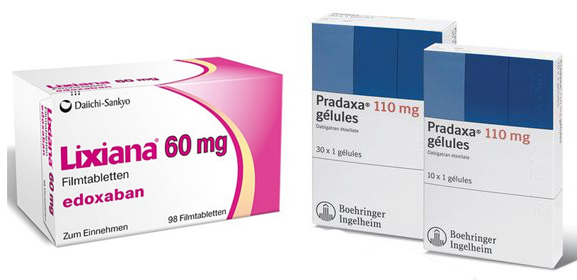The market of non-vitamin K antagonist oral anticoagulants (NOACs), which replaced Warfarin, is experiencing an upheaval with a latecomer drug Lixiana (ingredient: edoxaban) by Daiichi Sankyo outperforming a blockbuster Pradaxa (ingredient: dabigatran) by Boehringer Ingelheim.
According to data from U-BIST, a pharmaceutical market researcher, monthly outpatient prescriptions of Lixiana reached 1.95 billion won ($1.83 million) in November, exceeding 1.63 billion won recorded by Pradaxa prescriptions.

Lixiana was the latest to enter the market among the four NOACs in Korea. However, the drug has been sweeping the local NOAC market since Daiichi Sankyo teamed up with Daewoong Pharmaceutical.
Lixiana’s monthly outpatient prescriptions started to exceed those of Pradaxa in July, when the former amounted to 1.67 billion won, outpacing 1.45 billion won prescriptions of the latter. The trend continued in August. Lixiana’s prescriptions marked 1.68 billion won in August, outperforming Pradaxa. Despite a plunge in prescriptions in October amid reduced working days with Chuseok, the nation’s largest holiday, Lixiana’s prescriptions stood at 1.62 billion won in the month while those of Pradaxa marked 1.33 billion won.
Lixiana’s monthly prescriptions surged by 19.8 percent to 1.95 billion won in November from the preceding month, beating Pradaxa’s 1.63 billion won prescriptions.
The NOAC market leader Xarelto by Bayer Korea saw its November prescriptions standing at 3.55 billion won, followed by Eliquis’ 2.33 billion won prescriptions.
Lixiana has strength in that the drug offers a variety of study results focusing on Asian patients. It also secured evidence in Japan in 2011 that it could prevent and treat venous thromboembolism for patients who went through surgery on a hip joint or a knee joint.

